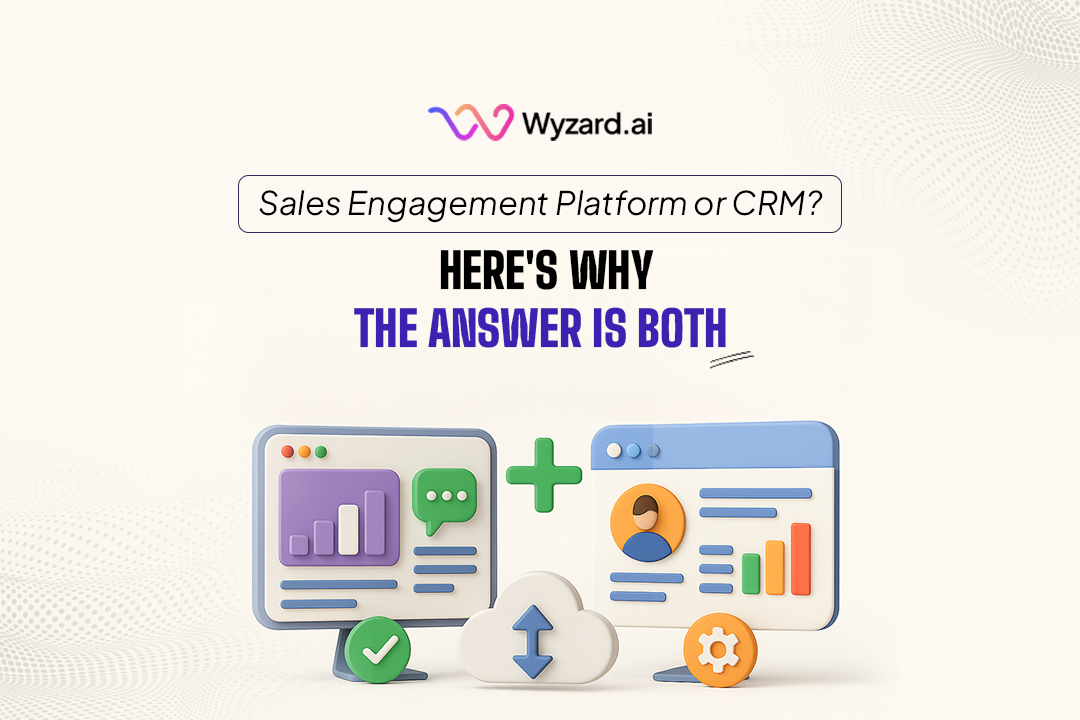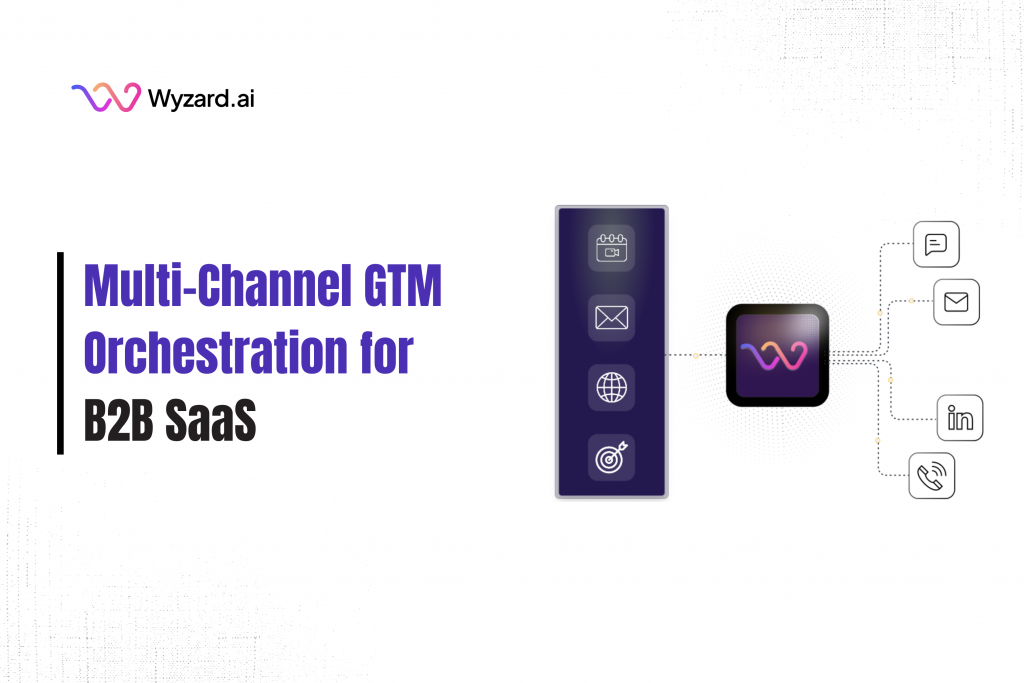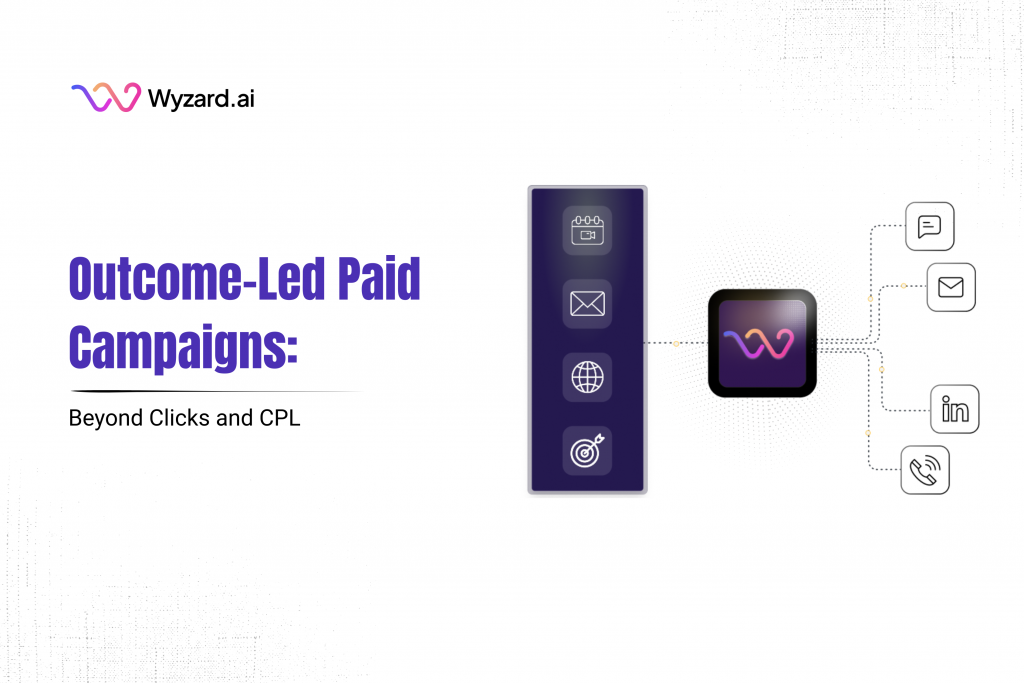If you run marketing or revenue for a B2B SaaS company, the goal is clear: turn GTM spend into ...
Sales Engagement Platform or CRM? Here’s Why the Answer is Both


Subscribe Now
Your marketing team generates a steady stream of inbound traffic. Your CRM captures lead information. Yet somewhere between that initial website visit and a closed deal, high-intent prospects slip through the cracks.
The culprit? A broken handoff between your customer engagement platform vs CRM systems. Top-performing sales teams use both a CRM and a sales engagement platform; many SaaS companies still rely on one or the other, creating friction in their go-to-market motion.
This in-depth article explains the key differences between these systems, why you need both tools, and how their integration can streamline your sales process, drive inbound conversion, and ultimately boost your revenue.
Understanding the Role of CRM Systems
A CRM is the cornerstone of your sales technology stack, serving as your system of record. It is designed to capture, store, and organize customer and prospect information from the first touchpoint through the entire customer lifecycle.
Core Capabilities of a CRM
- Centralized Data Storage: Your CRM functions as a centralized repository, similar to a “smart Rolodex”, where every interaction, email, call, and meeting is recorded, making it accessible to your entire organization.
- Relationship Management: By keeping a detailed history of interactions, a CRM enables your team to build and strengthen customer relationships. This organized database helps in scheduling reminders, assigning tasks, and ensuring that no engagement opportunity is missed.
- Pipeline and Deal Tracking: CRMs provide visual pipelines that assist in tracking prospects through different sales stages. This makes it easier to forecast revenue and to identify potential bottlenecks.
- Reporting and Analytics: With extensive reporting features, CRMs help in analyzing sales data and deriving actionable insights. Managers can use this data to develop strategies that improve customer retention and drive overall sales performance.
A well-implemented CRM provides your team with the comprehensive historical context needed to understand customer behavior and plan strategic outreach initiatives.
Exploring Sales Engagement Platforms
While a CRM saves and organizes data, a Sales Engagement Platform is designed to make that data actionable through automated outreach. SEPs are your action plan, meant to contact prospects at the best time with targeted messaging across many channels.
Key Functions of a Sales Engagement Platform
- Multi-Channel Communication: SEPs enable your marketing and sales teams to coordinate outreach efforts across various channels, email, chat, and sometimes even social media. This ensures that your message reaches prospects wherever they are most active.
- Automated Workflows and Cadences: By setting up tailored sales cadences, SEPs automate highly personalized sequences that trigger based on specific prospect behaviors. For instance, if a lead revisits key product pages or downloads a whitepaper, the SEP can automatically initiate a follow-up.
- Real-Time Data Capture and Logging: While CRMs require manual entry (or retroactive logging) of sales activities, SEPs automatically capture and log every touchpoint as it happens. This results in a more accurate picture of buyer engagement and helps identify which actions lead to a successful conversion.
- Personalization at Scale: SEPs utilize the stored data in your CRM to create messages and follow-up strategies that are precisely tailored to each prospect’s journey. This not only boosts engagement but also speeds up the sales cycle.
Understanding the Core Difference (System of Record vs. System of Action)
The distinction between CRM and SEP comes down to fundamental purpose:
- CRM (Customer Relationship Management): Your system of record, a centralized database storing customer information, interactions, and history
- Sales Engagement Platform: Your system of action, the engine that drives personalized, automated interactions with prospects
Your CRM tells you who your prospects are and what they’ve done. Your SEP determines how and when to engage them.
Why You Need Both Systems
Relying solely on either a CRM or a SEP leaves critical gaps in the inbound lead conversion process. When these two systems work independently, you risk slower response times and missed opportunities. However, integrating them creates a seamless, data-driven environment that underpins every stage of the sales process.
The Synergy of Integration
- Integration bridges the gap between data storage and real-time action. Your CRM’s comprehensive customer information feeds into the SEP, allowing for a synchronized, full-funnel view that informs every interaction. This 360-degree perspective is essential for smart, context-driven engagement.
- With integration, the moment a prospect’s behavior is logged in the CRM, the SEP can spring into action. This real-time synchronization ensures that high-intent leads receive personalized communications at critical moments, reducing the delay that often causes leads to grow cold.
- Bidirectional data flow between your CRM and SEP minimizes the need for repeated manual inputs. The result is cleaner data, fewer administrative errors, and more time for your sales team to focus on nurturing relationships.
- Integrating these systems ensures that every outbound message is informed by both historical context and real-time behavior. This balanced approach leads to more effective messaging, optimizes outreach strategies, and ultimately accelerates the sales cycle.
When your CRM and sales engagement platform work together perfectly, they not only help each other out, but they also become one powerful tool for closing more deals and making customers happier.
Best Practices for Implementing CRM and SEP Integration
Implementing both tools in harmony requires a thoughtful, strategic approach. Here are some best practices to ensure successful integration and long-term benefits:
- Audit Your Data: Begin by reviewing and cleansing your CRM data. Accurate, up-to-date information is critical for driving effective automation through the SEP.
- Map the Customer Journey: Define key touchpoints within your inbound lead process. Understanding where prospects engage most will help you set up the appropriate automation workflows within your SEP.
- Select Compatible Tools: Ensure that your CRM system can integrate seamlessly with your chosen sales engagement platform. Many platforms today offer native integrations or robust APIs that facilitate smooth data exchange.
- Develop Clear Workflows: Outline distinct sales process steps that incorporate automated triggers. For example, design automated sequences that kick in when a lead reaches a specific stage, such as post-download follow-up or repeat visits to pricing pages.
- Train Your Teams: Provide thorough training so that both your sales and marketing teams understand how to use the integrated system effectively. Teams should know how to interpret engagement data and adjust outreach strategies based on real-time feedback.
- Monitor and Optimize: Regularly track key performance indicators (KPIs) such as response times, conversion rates, and pipeline velocity. Use these insights to continuously refine your automation parameters and outreach strategies.
Implementing these practices will not only smooth the integration process but will also help your organization establish a predictable revenue model based on data-informed decisions.
Key Metrics to Track (Measuring Success)
Monitor these areas to assess your integrated CRM and SEP performance:
Engagement Metrics:
- Response time to inbound inquiries
- Email engagement rates
- Website visitor engagement
- Multi-touch attribution
Conversion Metrics:
- Lead-to-opportunity conversion rates
- Sales cycle length
- Pipeline velocity
- Win rates
Efficiency Metrics:
- Time saved on manual tasks
- Data accuracy improvements
- Team productivity gains
Impact on Revenue (Real-World Benefits of Integration)
Organizations that successfully integrate their CRM and SEP systems witness tangible improvements in their sales and marketing outcomes. Here’s how the integration drives revenue:
- Accelerated Sales Cycles: Automated, real-time follow-ups mean that opportunities are engaged at precisely the right moment. The result is faster movement through the sales funnel and shorter sales cycles.
- Enhanced Lead Conversion: With personalized and timely outreach, the quality of interactions increases markedly. Sales teams are better able to convert high-intent leads into qualified opportunities, which in turn boosts overall conversion rates.
- Improved Efficiency and Focus: Sales reps spend significantly less time on manual data entry and administrative tasks. This enables them to dedicate more time to strategic engagements and closing deals.
- Actionable Insights for Strategy: With all engagement data centralized and analyzed, leadership can identify best practices and replicate successful strategies across the team. Real-time analytics also help in quickly addressing bottlenecks in the sales process.
The integration of these systems empowers your sales and marketing teams to work smarter and more efficiently, key factors in achieving scalable revenue growth in a competitive market.
How AI Marketing Copilots Transform Inbound Conversion
Marketing automation tools for SaaS like Wyzard.ai offer specific capabilities:
- Agentic Conversations: Agentic chat that engage instantly with website visitors
- Agentic Emails: AI-generated personalized email responses
- Buyer Signal Intelligence: Unified intent tracking across content, email, and web
- Prospect Enrichment: Gather lead data without forms
- Customizable Agents: Branded AI agents with tone, personality, and context
Conclusion
The debate of “sales engagement platform vs crm” becomes a non-issue when you understand that each tool plays a distinct yet complementary role. In today’s fast-paced B2B SaaS market, combining a robust CRM with an efficient Sales Engagement Platform creates a holistic approach that leverages both data and action. This integration not only streamlines internal processes but also empowers your teams to engage with prospects in real time, maximizing your inbound success.
Discover how combining a CRM with a Sales Engagement Platform can lead to faster follow-ups, more personalized outreach, and a significant boost in your revenue generation.
FAQ
A CRM is your system of record that stores and organizes customer data, whereas a Sales Engagement Platform is your system of action that automates personalized outreach based on that data. Together, they provide both the context and the action needed for effective sales engagement.
No. While some tools provide overlapping functions, a Sales Engagement Platform and a CRM serve distinct roles. The CRM maintains an accurate record of all interactions and customer details, while the SEP uses that information to drive timely, automated engagement. Integration of both results in a more effective sales process.
Integration creates a seamless flow of information between data storage and actionable outreach. This leads to faster response times, reduced administrative work, a 360-degree view of the sales funnel, and ultimately, increased win rates as automated engagement is triggered based on real-time behavior data.
Ensure that the chosen CRM and Sales Engagement Platform offer native integrations or robust APIs. Consider your overall tech stack, data quality, and intended workflows. Involving your CRM support team early in the evaluation process also helps define integration requirements more clearly.
By automatically triggering personalized follow-ups at the right moment, integrated systems reduce the lag between lead interest and engagement. This alignment of data-driven insights with immediate action means that high-intent prospects are engaged more effectively, leading to higher conversion rates.
Other blogs
The latest industry news, interviews, technologies, and resources.
Form-Free GTM: Designing Frictionless Conversion Flows
A visitor lands on your pricing page. They are ready to talk, not to wrestle with a 12-field form. ...

December 8, 2025
Outcome-Led Paid Campaigns: Beyond Clicks and CPL
You put serious money into paid media. Dashboards show strong CTR and healthy CPL. The next slide hits and ...

 We’ve secured funding to power Signal-to-Revenue AI to GTM teams globally. →
We’ve secured funding to power Signal-to-Revenue AI to GTM teams globally. →


